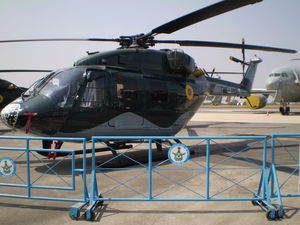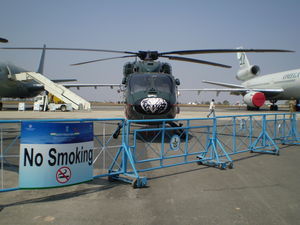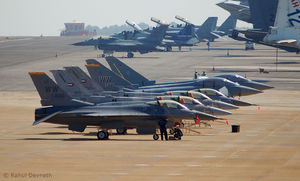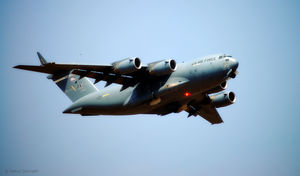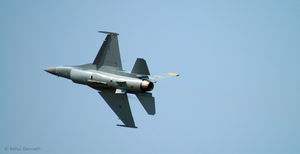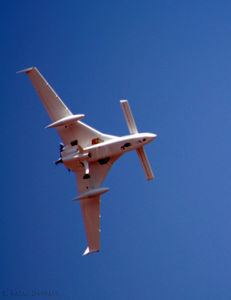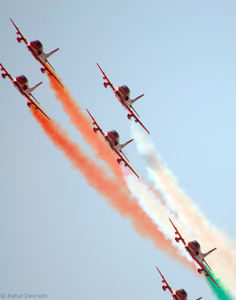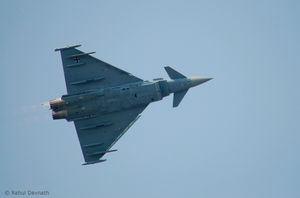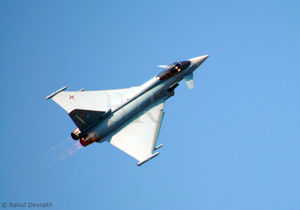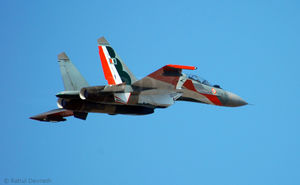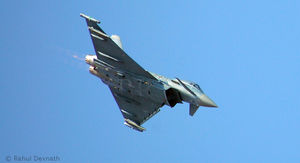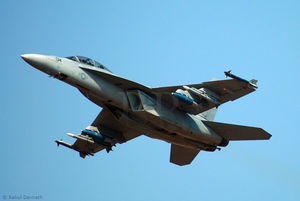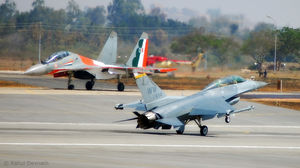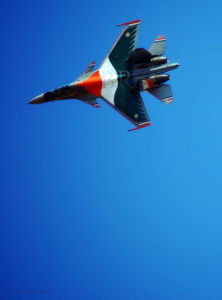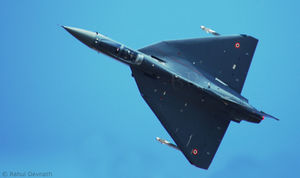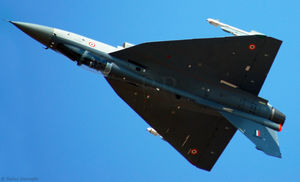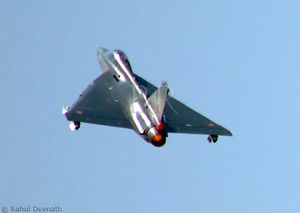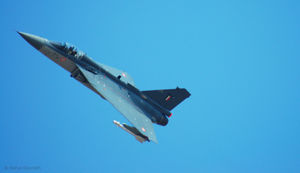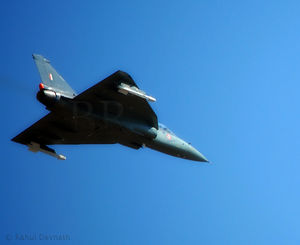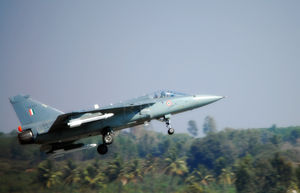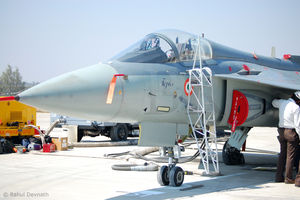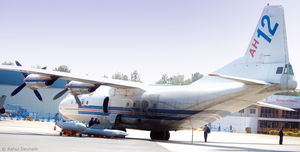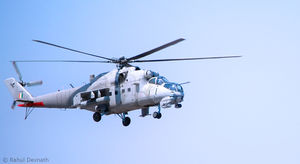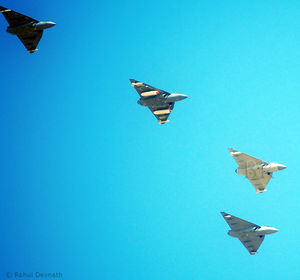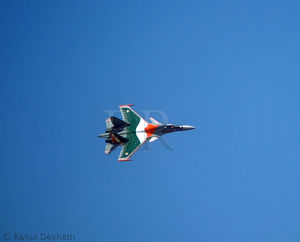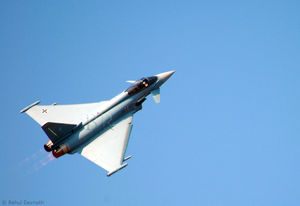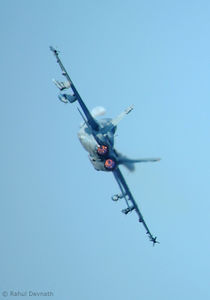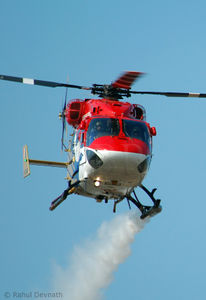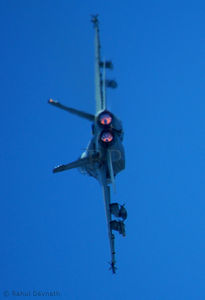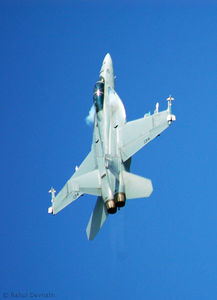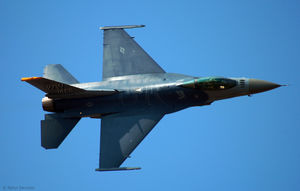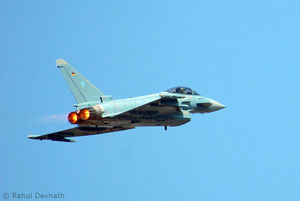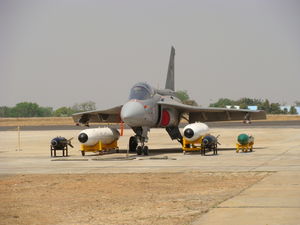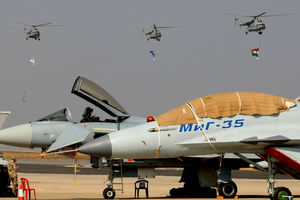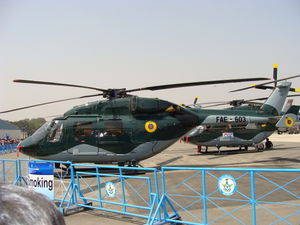India has launched a hi-tech project it says will provide medical education and better health care in Africa.
Launched by Indian Foreign Minister Pranab Mukherjee in Delhi, the project will at first connect 11 African countries with India.
The services will include virtual classes for medical staff and online medical consultations.
India is highly conscious of China's involvement in Africa and has announced a number of joint projects.
Degrees
Mr Mukherjee described the project as bridging the digital divide between India and Africa.
Patients in parts of rural Africa will soon be able to seek medical advice from Indian doctors via satellite and fibre-optic link-ups.
Nurses will get training and virtual classrooms will help around 10,000 African students annually get specialised degrees from universities.
Online medical consultations will be provided every day for one hour to isolated hospitals.
To start with, 11 African countries including Ethiopia, Senegal, Nigeria and Ghana will be connected with India.
By June eight more countries will be covered and eventually the offices of 53 African heads of state will be linked.
Friday, February 27, 2009
Tuesday, February 24, 2009
India 'to join elite space club'
India has earmarked more than $2.5bn to launch its own manned space flight and join the elite club of the US, China and Russia.
India's planning commission has set aside the cash to finance preparations.
A spokesman for the Indian Space Research Organisation (Isro) welcomed the news.
If, as widely expected, the cabinet approves the plan, India could operate its first two-man space mission within a few years.
'Challenges'
Only the US, Russia and China can currently put their own astronauts into space using their own spacecraft.
India's dream is expensive and the planning commission, chaired by India's prime minister, has agreed to hand over billions of dollars to make it happen.
Officials at Isro feel that they are now a big step closer to getting manned missions off the ground.
Spokesman S Satish said: "The target launch date is around 2015, wherein we plan to put two astronauts in a lower orbit for about a week's duration.
"And we have to establish a facility for training the astronaut, then we have to build a human space capsule - so these are some of the major technological challenges."
India's planning commission has set aside the cash to finance preparations.
A spokesman for the Indian Space Research Organisation (Isro) welcomed the news.
If, as widely expected, the cabinet approves the plan, India could operate its first two-man space mission within a few years.
'Challenges'
Only the US, Russia and China can currently put their own astronauts into space using their own spacecraft.
India's dream is expensive and the planning commission, chaired by India's prime minister, has agreed to hand over billions of dollars to make it happen.
Officials at Isro feel that they are now a big step closer to getting manned missions off the ground.
Spokesman S Satish said: "The target launch date is around 2015, wherein we plan to put two astronauts in a lower orbit for about a week's duration.
"And we have to establish a facility for training the astronaut, then we have to build a human space capsule - so these are some of the major technological challenges."
Monday, February 23, 2009
'Slumdog' celebrations fill Mumbai's crowded slums
MUMBAI, India – The narrow lanes of a teeming Mumbai slum are packed as friends and neighbors watch the Oscars and celebrate the hometown heroes nabbing of the ceremony's top award.
Two of the Indian child actors in "Slumdog Millionaire" were plucked from this desperately poor neighborhood on the outskirts of Mumbai to stars in the rags-to-riches tale that stormed the Academy Awards.
Azharuddin Mohammed Ismail, 10, and Rubina Ali, 9, were flown to Los Angeles for the ceremony, leaving their friends back home to gawk, beam, shout and dance in celebration.
"Slumdog" won eight Oscars, including best picture, best director, and two awards for best music.
Each time a new award was announced, children broke out their best Bollywood dance moves while the crowd cheered.
Two of the Indian child actors in "Slumdog Millionaire" were plucked from this desperately poor neighborhood on the outskirts of Mumbai to stars in the rags-to-riches tale that stormed the Academy Awards.
Azharuddin Mohammed Ismail, 10, and Rubina Ali, 9, were flown to Los Angeles for the ceremony, leaving their friends back home to gawk, beam, shout and dance in celebration.
"Slumdog" won eight Oscars, including best picture, best director, and two awards for best music.
Each time a new award was announced, children broke out their best Bollywood dance moves while the crowd cheered.
Indian joy at Oscar night glory

India has been revelling in Oscar night glory, with the success of Slumdog Millionaire, its composer AR Rahman and the documentary Smile Pinki.
Rahman won two Oscars, best original score and best original song - Jai Ho - with fellow Indian Gulzar.
Resul Pookutty bagged another award for sound mixing of the rags-to-riches Mumbai movie, which also won best picture and best director.
Smile Pinki, about an Indian cleft-lip girl, won best short documentary.
The success of Slumdog sparked massive celebrations back in the Mumbai slum where two of the film's child actors still live.
Rubina Ali and Azharuddin Ismail were both in Hollywood for the ceremony.
Indian Prime Minister Manmohan Singh said of the winners: "They have done India proud."
'Power of hope'
India's biggest winner of the night was Rahman, 43.
INDIA'S OSCAR WINNERS
2009: AR Rahman - best original score
2009: AR Rahman and Gulzar - best original song
2009: Resul Pookutty - sound mixing
1992: Satyajit Ray - lifetime achievement
1983: Bhanu Athaiya - costume design (Gandhi)
He said as he accepted the award: "I just want to thank again the whole crew of Slumdog Millionaire, especially [director] Danny Boyle, for giving me such a great opportunity."
The composer said he hailed "all the people from Mumbai and the essence of the film, which is about optimism and the power of hope and our lives".
He went on: "All my life I've had a choice of hate and love. I chose love and I'm here. God bless."
TV pictures showed Rahman's family cutting a cake in his home city of Madras (Chennai) in southern India and celebrating the composer's win.
A local band played a tribute to the composer singing Jai Ho.
It's a proud moment for India that the film has been awarded an Oscar
Rafique,
Father of Rubina Ali
Mumbai slum hails Millionaire stars
AR Rahman: Global tunesmith
In pictures: Joy in India
Resul Pookutty won for sound mixing of Slumdog with Ian Tapp and Richard Pryke.
Pookutty said: "I'm the first Indian technician to be nominated for an Oscar and winning one... And it's an absolute glory for me myself personally and for my country."
Pookutty, a graduate from the prestigious Film and Television Institute of India, has been in the industry for more than 10 years and has worked on several big films.
A spokesperson for Indian President Pratibha Patil, said she was "specially thrilled with the remarkable feat achieved by AR Rahman, Gulzar, Resul Pookutty and making India proud".
Bollywood actor-director Aamir Khan said he was also "thrilled" by India's successes at the Oscars.
Smile Pinki poster
Smile Pinki is the story of a girl with a cleft lip
"It is great to see Indian talent [in cinema] being recognised internationally. We are no less than anybody else," Khan told TV channels.
Smile Pinki, a 39-minute documentary by American director Megan Mylan on an eight-year-old Indian girl born with a cleft lip, had been one of the four short documentaries nominated for the Academy Awards.
There were celebrations in the north Indian village in Mirzapur district where Pinki lives, the BBC's Geeta Pandey says.
The girl's uncle said several hundred people took part in a procession, chanting "Bharat mata ki jai" (Long Live Mother India).
One of the other films nominated in the short documentary category was also India-based. The Final Inch by American director Irene Taylor Brodsky follows polio workers across India as they vaccinate children in an effort to eradicate the virus.
India now has five Oscar winners.
Costume designer Bhanu Athaiya won for her work in Gandhi in 1983 and director Satyajit Ray won a lifetime achievement award in 1992
Smile Pinki wins best short Oscar

The story of an Indian girl born with a cleft lip has won the Oscar award in the short documentary feature category.
Smile Pinki tells the story of eight-year-old Pinki's journey from being a social outcast in her village to her acceptance by society.
The 39-minute film, made by American director Megan Mylan, was one of four short documentaries nominated for the Academy Awards.
Campaigners say it is a big boost for children born needing cleft surgery.
Ms Mylan thanked Pinki in her acceptance speech at the award ceremony in Hollywood.
"Thank you Pinki. Thank you for letting me tell your incredible story," she said.
'Asleep'
Pinki, for her part, had fallen asleep before the award was announced.
"Pinki was in the hall, but was asleep by then, it was quite late," plastic surgeon Dr Subodh Kumar Singh told the BBC from Los Angeles.
Pinki in the US (Picture: Dr Subodh Kumar Singh)
Pinki smiles at Oscars
Dr Singh performed the corrective surgery on Pinki in 2007 which transformed her life.
"Before the awards, she was very good on the red carpet and posed for pictures with the rest of the team. But she got tired and fell asleep," he said.
Dr Singh described Smile Pinki's victory as "fabulous".
"The Oscar is the biggest news for cleft children. It will bring awareness about the problem and help the cause of four million children worldwide who are born with cleft," he said.
Meanwhile, celebrations have begun in Pinki's village Rampur Dhavaia in the northern state of Uttar Pradesh.
Pinki's mother Shimla Devi, uncle Mithai Lal Sonkar and other relatives watched the Oscar ceremony live on the only television set in the village at the home of a retired government official.
'Huge procession'
"The news has been received with much joy," Mithai Lal Sonkar told the BBC.
"The villagers marched in a huge procession, there were 500 to 600 people, there was drum beating and the crowds chanted 'Bharat mata ki jai' [Long live Mother India]."
"The head of the village council has brought sweets and Pinki's mother has gone to the Shiva temple for thanksgiving."
Director Megan Mylan and Dr Subodh Kumar Singh
The award has been welcomed by campaigners
He said the villagers had organised two days of prayers at the Shiva temple to pray for Pinki's victory.
Born with a cleft lip in an impoverished family, Pinki spent the first few years of her life in abject misery.
Before the surgery, Pinki was shunned and teased by the children in her village.
"Everyone called me hothkati [the girl with the torn lip]," Pinki told the BBC earlier in February.
"I would feel very bad. I would feel hurt and get very angry. Sometimes I would abuse them. Now no one calls me a hothkati. They all call me Pinki," she said.
But post-Oscar, Pinki is a big star.
"We are all waiting for her to return from LA, then we will have real celebrations," her uncle said.
The award has also been welcomed by campaigners.
"Most people are unaware that cleft can be corrected and that too, totally free," Satish Kalra, South Asia director of global cleft charity Smile Train, told the BBC.
"This Oscar will create tremendous awareness about cleft, how it can be fixed, how a child will look post surgery. And even if 1% of the four million cleft patients go for surgery after this film, it will mean 40,000 people.
"Can you imagine any other Oscar which has transformed the lives of so many people? I am absolutely delighted by the award," he said.
Friday, February 20, 2009
Wednesday, February 18, 2009
India's indigenous aircraft carrier to sail by 2011: Indian Navy chief
NEW DELHI: Progressing towards self-reliance in the defence industry, India's first indigenous aircraft carrier will be in the waters by 2011,
Indian Navy chief Admiral Sureesh Mehta said Wednesday.
The under-construction aircraft carrier will be ready in two years.
"Our indigenous aircraft carrier is being constructed in Kochi. It has been three years since the work started. On Feb 28, what we call keel laying of the carrier will take place," Mehta told reporters here.
The building of a ship can be divided into seven phases: design, construction planning, work prior to keel laying, ship erection, launching, final outfitting, and sea trials.
"Many of the parts have already been constructed. My estimate is that it should be in the water in two years," Mehta said.
The aircraft carrier is expected to have 40,000 tonne displacement capacity at an estimated cost of Rs.3,000 crore (Rs.30 billion).
The Indian Navy is currently operating only one full deck aircraft carrier, the INS Viraat, also the only one being operated by a country in Asia
or Western Pacific. In a bid to become a true-blue water navy, the Indian Navy is expected to operate three aircraft carriers by 2015.
Indian Navy chief Admiral Sureesh Mehta said Wednesday.
The under-construction aircraft carrier will be ready in two years.
"Our indigenous aircraft carrier is being constructed in Kochi. It has been three years since the work started. On Feb 28, what we call keel laying of the carrier will take place," Mehta told reporters here.
The building of a ship can be divided into seven phases: design, construction planning, work prior to keel laying, ship erection, launching, final outfitting, and sea trials.
"Many of the parts have already been constructed. My estimate is that it should be in the water in two years," Mehta said.
The aircraft carrier is expected to have 40,000 tonne displacement capacity at an estimated cost of Rs.3,000 crore (Rs.30 billion).
The Indian Navy is currently operating only one full deck aircraft carrier, the INS Viraat, also the only one being operated by a country in Asia
or Western Pacific. In a bid to become a true-blue water navy, the Indian Navy is expected to operate three aircraft carriers by 2015.
Monday, February 16, 2009
Sunday, February 15, 2009
China, India poised to become new world power centres
WASHINGTON: As China and India restore their 18th century positions, a rising Asia is poised to become power centre of a world beset with
terrorism and proliferation threats across an "arc of instability," according to US intelligence agencies.
"China and India are restoring the positions they held in the eighteenth century when China produced approximately 30 percent and India 15 percent of the world's wealth," the director of national intelligence (DNI), Admiral Dennis Blair, told US Congress Thursday
"These two countries are likely to surpass the GDP of all other economies except the United States and Japan by 2025, although the current financial crisis may somewhat slow the momentum," he said in his annual threat assessment report.
"As the terrorism and proliferation threats persist across the 'arc of instability,' East and South Asia are poised to become the long-term power centre of the world," said the report representing the findings of all 16 US intelligence agencies.
It serves as a leading security reference for policymakers and Congress. Besides reviewing adversaries, it also considered this year the security impact of issues including climate change and the economy.
The global economic crisis has become the biggest near-term US security concern, sowing instability in a quarter of the world's countries and threatening destructive trade wars, the report said.
"The financial crisis and global recession are likely to produce a wave of economic crises in emerging market nations over the next year," said the report. A wave of "destructive protectionism" was possible as countries find they cannot export their way out of the slump.
Japan remains the second largest global economy and a strong US ally in the region, but the global economic slowdown is exacting a heavy toll on Japan's
economy, it said. "To realize its aspirations to play increased regional and global roles will require strong leadership and politically difficult decisions."
All together - Japan, the "tiger" economies like South Korea and Taiwan as well as the rising giants of China and India point to the "rise of Asia" as a defining characteristic of the 21st century, the DNI report said.
China's re-emergence as a major power with global impact is especially affecting the regional balance of power, it said.
"Industrialised countries are already in recession, and growth in emerging market countries, previously thought to be immune from an industrialised country financial crisis, has also faltered, and many are in recession as well.
"Even China and India have seen their dynamic growth engines take a hit as they grapple with falling demand for their exports and a slowdown in foreign direct and portfolio investments," it noted.
"Time is our greatest threat. The longer it takes for the recovery to begin, the greater the likelihood of serious damage to US strategic interests," the report said.
terrorism and proliferation threats across an "arc of instability," according to US intelligence agencies.
"China and India are restoring the positions they held in the eighteenth century when China produced approximately 30 percent and India 15 percent of the world's wealth," the director of national intelligence (DNI), Admiral Dennis Blair, told US Congress Thursday
"These two countries are likely to surpass the GDP of all other economies except the United States and Japan by 2025, although the current financial crisis may somewhat slow the momentum," he said in his annual threat assessment report.
"As the terrorism and proliferation threats persist across the 'arc of instability,' East and South Asia are poised to become the long-term power centre of the world," said the report representing the findings of all 16 US intelligence agencies.
It serves as a leading security reference for policymakers and Congress. Besides reviewing adversaries, it also considered this year the security impact of issues including climate change and the economy.
The global economic crisis has become the biggest near-term US security concern, sowing instability in a quarter of the world's countries and threatening destructive trade wars, the report said.
"The financial crisis and global recession are likely to produce a wave of economic crises in emerging market nations over the next year," said the report. A wave of "destructive protectionism" was possible as countries find they cannot export their way out of the slump.
Japan remains the second largest global economy and a strong US ally in the region, but the global economic slowdown is exacting a heavy toll on Japan's
economy, it said. "To realize its aspirations to play increased regional and global roles will require strong leadership and politically difficult decisions."
All together - Japan, the "tiger" economies like South Korea and Taiwan as well as the rising giants of China and India point to the "rise of Asia" as a defining characteristic of the 21st century, the DNI report said.
China's re-emergence as a major power with global impact is especially affecting the regional balance of power, it said.
"Industrialised countries are already in recession, and growth in emerging market countries, previously thought to be immune from an industrialised country financial crisis, has also faltered, and many are in recession as well.
"Even China and India have seen their dynamic growth engines take a hit as they grapple with falling demand for their exports and a slowdown in foreign direct and portfolio investments," it noted.
"Time is our greatest threat. The longer it takes for the recovery to begin, the greater the likelihood of serious damage to US strategic interests," the report said.
F-16 tyres burst at Indian airshow

BANGALORE, India (AFP) – Two tyres of an F-16 burst while the fighter jet was landing after a display at an Indian airshow on Sunday, the organisers said, adding that no one was hurt.
US-based aerospace giant Lockheed Martin, which hopes to sell 126 such jets to India, said the accident did not disrupt other flights on the final day of the five-day show in this southern Indian city.
"Both the left and right rear tyres burst one after the other due to heat and friction," F-16 test pilot Paul Randall told reporters after the blow-outs at the airshow.
"An indication that the right tyre was going to burst before landing was shown on the flight control panel before the landing," Randell said as the company in a statement added that no one was hurt.
Besides Lockheed Martin, five global aerospace firms are in the race to win the Indian fighter jet deal estimated to be worth 12 billion dollars.
India to fire 5,000 km range Agni missile by December 2010
Bangalore (IANS): India is likely to fire its Agni-V ballistic missile with a range of 5,000 km by the end of 2010, a senior official of the Defence Research and Development Organisation (DRDO) said Friday.
"We should be able to do something before December 2010," DRDO chief M. Natarajan said.
After the successful test of the 3,500 km range Agni-III in May last year, scientists are now working to club the first and second stage of the missile to increase its range to 5,000 km.
"We will be working on capitalising the first and second stages," Natarajan explained.
Agni-III is capable of carrying warheads weighing up to 1.5 tonnes, is 16 metres tall and weighs 48 tonnes.
Agni-I is a 750-800 km short-range missile. Agni-II has a range of more than 1,500 km. Both have already been inducted in the armed forces.
While Agni-III is capable of reaching strategic targets deep inside China like Beijing and Shanghai, it falls short of being an ICBM (inter-continental ballistic missile) that has a range of over 5,000 km.
"We should be able to do something before December 2010," DRDO chief M. Natarajan said.
After the successful test of the 3,500 km range Agni-III in May last year, scientists are now working to club the first and second stage of the missile to increase its range to 5,000 km.
"We will be working on capitalising the first and second stages," Natarajan explained.
Agni-III is capable of carrying warheads weighing up to 1.5 tonnes, is 16 metres tall and weighs 48 tonnes.
Agni-I is a 750-800 km short-range missile. Agni-II has a range of more than 1,500 km. Both have already been inducted in the armed forces.
While Agni-III is capable of reaching strategic targets deep inside China like Beijing and Shanghai, it falls short of being an ICBM (inter-continental ballistic missile) that has a range of over 5,000 km.
Saturday, February 14, 2009
India's indigenous N-sub secret is out
The Defence Research and Development Organisation (DRDO) has added a feather to its cap. It is delivering on schedule— in 2009— India's first indigenously built nuclear powered submarine (SSBN) as it had promised at the beginning of the United Progressive Alliance's (UPA) term in office.
The secret of the indigenous nuclear submarine programme seems to be finally out. Defence minister A. K. Antony has confirmed what was being speculated all this while - that the country is ready to launch the third arm of its nuclear triad.
India is getting a batch of submarine launched ballistic missiles (SLBM) and submarine- launched cruise missiles (SLCM), ready to wed with the SSBNs, which would presumably be nuclear tipped. This would, in turn, underline the deterrence posture of the nuclear weapons programme providing it a failsafe 'second strike' capability.
But this would also entail fundamental change in the country's nuclear weapons policies for the peculiar nature of nuclear submarine deployment.
A nuclear submarine remains submerged underwater for most of its deployment period thus making communication difficult especially in times of a national emergency.
A nuclear submarine commander is therefore armed with a separate launch regimen that is qualitatively different from those used above ground.
Hence, when India launches its nuclear submarine, reportedly three, it would have to put in place launch codes that would provide a degree of autonomy to the commanders. This, in turn, would change the deployment pattern of at least a portion of the country's nuclear forces to 'ready arsenal'. This would require a political decision.
The Indian development is important in terms of the changing Chinese deployment by which they are modernising their nuclear submarine fleet, putting into waters the refurbished Xia class and a new Jin class.
The country had been working on the submarine, coyly termed Advanced Technology Vehicle (ATV) since 1985. The design is reportedly based on the old Charlie II- class submarine - a former Soviet make.
The programme was bedevilled with problems in developing a reactor suitable for the platform and then, building a containment vessel for the reactor. The attack submarine design is said to have a 4,000- ton displacement and a single- shaft, home- built nuclear power plant.
The estimated speed of the vessel is 12- 15 knots on surface, and 30- 34 knots submerged.
The reactor is of the pressurised water variety.
The nuclear submarine would beef up the country's presence in the Indian Ocean.
It brings to fruition a programme that was kicked off under the leadership of the late Rajiv Gandhi who had leased a Charlie- class nuclear submarine that was renamed in 1988 as INS Chakra.
The secret of the indigenous nuclear submarine programme seems to be finally out. Defence minister A. K. Antony has confirmed what was being speculated all this while - that the country is ready to launch the third arm of its nuclear triad.
India is getting a batch of submarine launched ballistic missiles (SLBM) and submarine- launched cruise missiles (SLCM), ready to wed with the SSBNs, which would presumably be nuclear tipped. This would, in turn, underline the deterrence posture of the nuclear weapons programme providing it a failsafe 'second strike' capability.
But this would also entail fundamental change in the country's nuclear weapons policies for the peculiar nature of nuclear submarine deployment.
A nuclear submarine remains submerged underwater for most of its deployment period thus making communication difficult especially in times of a national emergency.
A nuclear submarine commander is therefore armed with a separate launch regimen that is qualitatively different from those used above ground.
Hence, when India launches its nuclear submarine, reportedly three, it would have to put in place launch codes that would provide a degree of autonomy to the commanders. This, in turn, would change the deployment pattern of at least a portion of the country's nuclear forces to 'ready arsenal'. This would require a political decision.
The Indian development is important in terms of the changing Chinese deployment by which they are modernising their nuclear submarine fleet, putting into waters the refurbished Xia class and a new Jin class.
The country had been working on the submarine, coyly termed Advanced Technology Vehicle (ATV) since 1985. The design is reportedly based on the old Charlie II- class submarine - a former Soviet make.
The programme was bedevilled with problems in developing a reactor suitable for the platform and then, building a containment vessel for the reactor. The attack submarine design is said to have a 4,000- ton displacement and a single- shaft, home- built nuclear power plant.
The estimated speed of the vessel is 12- 15 knots on surface, and 30- 34 knots submerged.
The reactor is of the pressurised water variety.
The nuclear submarine would beef up the country's presence in the Indian Ocean.
It brings to fruition a programme that was kicked off under the leadership of the late Rajiv Gandhi who had leased a Charlie- class nuclear submarine that was renamed in 1988 as INS Chakra.
Tuesday, February 10, 2009
HAL's Dhruv helicopters ready for Ecuador

Visitors to Hindustan Aeronautics Limited's high-security helicopter hangars in Bengaluru nowadays confront a startling sight. Dominating the tarmac are five shiny new Dhruvs, the HAL-manufactured Advanced Light Helicopters, emblazoned with the insignia and the roundels of the Ecuadorian Air Force.
With Aero India 2009 around the corner -- India's biggest-ever air expo, scheduled from February 11 to 15 -- HAL is readying to hand over, ahead of schedule, its first-ever export order won in a competitive contract, run last year by Ecuador for seven helicopters.
Not only did the Dhruv outperform rival machines from global majors like Eurocopter (the world's biggest helicopter manufacturer), but HAL's price of just $7 million per helicopter conclusively won it the contract.
HAL is out to make a splash. The Ecuador Air Force chief will receive five Dhruvs at a high-profile media event at Aero India 2009. The remaining two will be handed over within six months. And instead of the conventional (and cheap) way of transporting helicopters across continents -- by painstakingly dismantling them and sending them by ship -- HAL has decided to fly the Dhruvs to Ecuador in a giant Antonov-124 transport aircraft.
"Transportation in an AN-124 will merely involve removing the rotor blades and quickly reassembling them after they land in Ecuador," explains N Seshadri, executive director of HAL's Rotary Wing R&D Centre.
"This is something with which we in HAL are quite familiar; the Indian Air Force Sarang team, which regularly displays helicopter aerobatics in major air shows abroad, often transports its helicopters in AN-124s."
HAL will have to pay about Rs 3.5 crores for ferrying the Dhruvs by AN-124, but the company believes that the goodwill generated will be worth the expense. Several South American countries besides Ecuador -- Columbia and Chile among them -- are evaluating the Dhruv. HAL knows they are carefully watching the Ecuador contract.
HAL, therefore, has pulled out the stops to ensure that Ecuador has no problems with maintaining its Dhruv fleet. A specially selected team of ten HAL engineers is being posted in Ecuador for the two-year period when the Dhruvs will be under warranty.
They will carry with them the entire requirement of tools and spares required to keep the helicopters serviceable. During these two years, the HAL engineers will train the Ecuadorian Air Force to maintain its Dhruvs.
Serviceability was a problem that drew HAL flak when the first Dhruvs were supplied to the Indian military. At that time, HAL was focussing so strongly on producing more Dhruvs that the army and the air force had to complain that HAL was not providing adequate maintenance back-up.
"We are now very comfortable with supporting the Dhruv, wherever it is flying," asserts Ashok Nayak, managing director of HAL's Bangalore Complex and the man who has been selected to head HAL when the current chief, Ashok Baweja, retires on March 31.
"We are already carrying out major maintenance -- including the servicing that is done after flying 250 hours and 500 hours -- in places like Nashik, Yelahanka and Manasbal in J&K. We will reliably do that in Ecuador as well."
The Dhruv assembly line in HAL Bangalore is already busy, fulfilling the Indian military's order for 159 helicopters. That notwithstanding, the Ecuador contract is seen as a major milestone, validating the Dhruv as an internationally competitive machine.
The ALH has been supplied earlier to Nepal and to Israel, but without competitive bidding and trials. Now one Dhruv is also ready for sale to Mauritius.
Subscribe to:
Posts (Atom)
